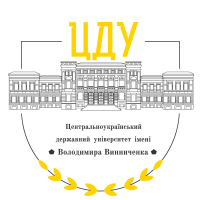LEXICAL FEATURES OF INTERNET MEMES
DOI:
https://doi.org/10.32782/2522-4077-2024-208-13Keywords:
abbreviations, fixed expressions, internet meme, language-image-texts, lexical, LOLspeak, metaphors, orthography, properties of internet memesAbstract
Internet communication systems, apart from traditional verbal means, use non-verbal means such as emoticons, GIFs, and memes. Internet memes have become an integral part of online culture, and their lexical features play an important role in their growing popularity. They are combinations of images and text, which spread quickly as a simple text that changes. The description of the term meme can be found in available studies by different authors as a synthesis of updated meme concept characteristics. Memes are still related to Dawkins' definition, but they have some special properties due to their mode of transmission and speed of replication. With the expansion of computer communications and the rapid growth of Internet forums, chats, blogs, and social networks, the term meme was coined as a new form of Internet communication. The paper studies such aspects of memes as the evolution of vocabulary, which reflects changes in modern languages. The number of statements regarding the lexical nature of memes as an element of Internet language development makes it possible to consider different interpretations of the meme concept including studying the examples of memes including melodies, ideas, symbols, phrases, images, etc. we suggest that the concept of text can be applied to the description of Internet memes as a lexical element. The language of internet memes is frequently a coordinated reflection of current dialect patterns and may incorporate slang, language, and indeed recently made words and expressions. It is vital to note that the lexical highlights of internet memes are closely related to a certain period. Interpreting these references is significant in understanding and re-creating memes. Internet memes frequently use special phonetic structures, which may incorporate unusual words and expressions, or alter existing expressions. The lexis of memes is an interesting phenomenon for studying as a part of the development of language and online culture, which highlights the language capacity of constant alterations and adjustments.
References
Bauckhage C. Insights into internet memes. In proceedings of the international AAAI conference on web and social media vol. 5, no. 1. P. 42–49.
Baym N. Personal connections in the digital age. Polity press. 2010. 196 p.
Blackmore S. The meme machine. Oxford University Press, 1999. 288 p.
Buchel B. Internet memes as means of communication. Brno : Masaryk University, 2012.
Castaño Díaz C. M. Defining and characterizing the concept of internet meme. Ces psicología, 2013. No. 6(2). P. 82–104.
Corpus of online discussions for research into linguistic memes / D. Freitag et al. Web as corpus workshop (WAC7). 2012. No. 14. P. 14–22.
Culturally-Embedded visual literacy / Y. Wang et al. Proceedings of the ACM on Human-Computer Interaction. 2019. Vol. 3, CSCW. P. 1–24. URL: https://doi.org/10.1145/3359170 (date of access: 22.01.2024).
Dawkins R. The selfish gene. Oxford Landmark Science, 1989. 463 p.
De Beaugrande R., Dressler W. Introduction to text linguistics. New York : NY: Routledge, 1996. 243 p.
Dennett D. C. Darwin's Dangerous Idea. The sciences. 1995. Vol. 35, no. 3. P. 34–40. URL: https://doi.org/10.1002/j.2326-1951.1995.tb03633.x.
Fetzer A. Textual coherence as a pragmatic phenomenon. The cambridge handbook of pragmatics / ed. by K. Allan, K. M. Jaszczolt. Cambridge. P. 447–468. URL: https://doi.org/10.1017/cbo9781139022453.024.
Heylighen F., Chielens K. Evolution of culture, memetics. Encyclopedia of complexity and systems science. New York, NY, 2009. P. 3205–3220. URL: https://doi.org/10.1007/978-0-387-30440-3_189.
Knobel M., Lankshear C. A new literacies sampler. New York : NY : Peter Lang, 2007. 177 p.
Kulkarni A. Internet meme and political discourse: a study on the impact of internet meme as a tool in communicating political satire. SSRN electronic journal. 2017. URL: https://doi.org/10.2139/ssrn.3501366.
Multimodal emoji prediction / F. Barbieri et al. Proceedings of the 2018 conference of the north american chapter of the association for computational linguistics: human language technologies, volume 2 (short papers), New Orleans, Louisiana. Stroudsburg, PA, USA, 2018. URL: https://doi.org/10.18653/v1/n18-2107.
Olesen M. Survival of the mediated: speech, the printing press and the internet as selection mechanisms in cultural evolution. Museum Tusculanum. 2009. P. 1–11.
Osterroth A. Das Internet-Meme als Sprache-Bild-Text. IMAGE. Zeitschrift für interdisziplinäre Bildwissenschaft. 2015. No. 11. P. 26–46.
Paradowski M. B., Jonak Ł. Diffusion of linguistic innovation as social coordination. Psychology of language and communication. 2012. Vol. 16, no. 2. P. 131–142. URL: https://doi.org/10.2478/v10057-012-0010-z.
Shifman L. Memes in a digital world: reconciling with a conceptual troublemaker. Journal of Computer-Mediated Communication. 2013. Vol. 18, no. 3. P. 362–377. URL: https://doi.org/10.1111/jcc4.12013.
Shubeck K., Huette S. Predicting meme success with linguistic features in a multilayer backpropagation network. Proceedings of the annual meeting of the cognitive science society. 2015. P. 2182–2187.
Sperber D. Explaining culture: a naturalistic approach. Oxford: Blackwell, 1996. 175 p.
Van Dijk T. Discourse and context: a sociocognitive approach. Cambridge, UK : Cambridge University Press, 2008. 283 p.
Visual dialog / A. Das et al. IEEE transactions on pattern analysis and machine intelligence. 2019. Vol. 41, no. 5. P. 1242–1256. URL: https://doi.org/10.1109/tpami.2018.2828437.








